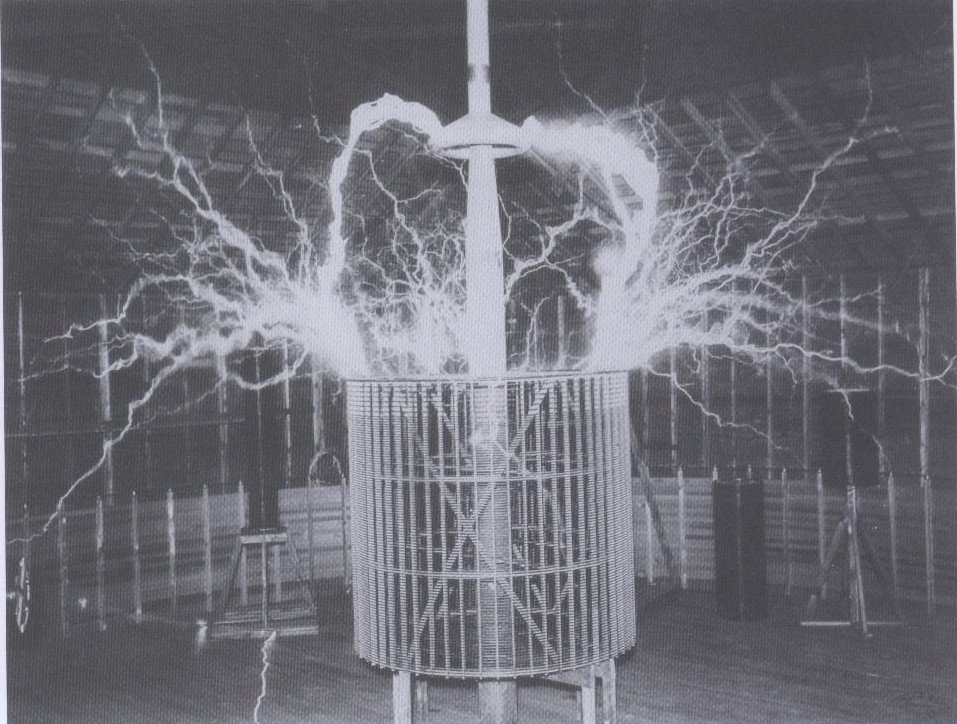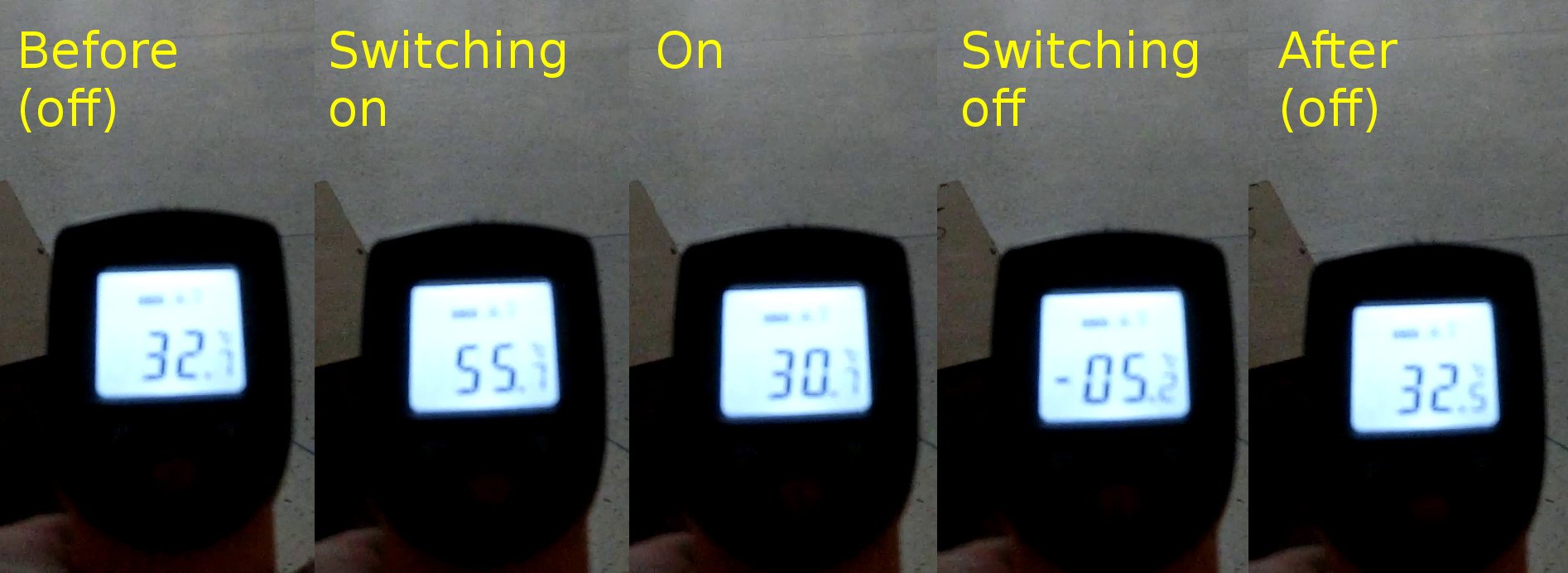In the previous post I have explained how Tesla saw electricity. In this post I want to present some of the consequences of his view before moving on to the real deal.
This is the first post of this series that I post in “physics” as was suggested by @rycharde.
So in case you have missed the earlier parts of this series, you can find them here part 1 - Intro, part 2 – Old science and part 3 - Electricity.

First I want to recall from my previous post:
If there is such a thing as electricity, there can be only one such thing, and; excess and want of that one thing, possibly; but more probably its condition determines the positive and negative character. (1)
and of course the most important fact that electricity (the cause of electrical and magnetic effects) is a gaseous medium and its interactions with the ether.
Enter the ideal gas law
Since we are dealing with a gas, the laws that govern gasses must apply. Also it may condense into a liquid or even solidify under high pressure and/or low temperature.
So let’s have a look at the ideal gas law:
P V = n R T
where P is the pressure, V the volume, n the amount (in moles), R the ideal gas constant and T the absolute temperature.
How would that translate into electrical terms?
P, pressure would most likely have something to do with voltage, and V, volume would be related to capacitance and n would say something about charge. Leaving the R and T aside for a minute then this would translate to something like
V C = Q
where V is voltage, C capacitance and Q charge,
which looks fairly familiar.
Since the R is just a constant needed to make the formula work with our chosen units, it does not bother me much. What is much more interesting is the T, the temperature of this electricity.
(purists may object that P V has a unit of Nm or Joule while V C does not. V² C however does, and that also takes away the difference between positive and negative as our first quote requires. The formula needs some adjusting anyway to make everything fit nicely)
We have never given it much consideration but it clearly follows that there must be a relationship between temperature and voltage. We did run into it, with for example the Seebeck effect, but I don’t believe that effect has ever been explained in this way. Though it is by far the most simple explanation.
The difference in conductance in various substances could be attributed to the amount of this gas present per unit of volume (compare to free electrons) and then it would follow that if the voltage and capacitance remain the same, a lower temperature would increase the amount of electricity and thus its conductivity.
Many facts that we are familiar with can thus be explained in a very simple way.
But also facts that we are less familiar with, such as this: Here I use a IR-thermometer to monitor the temperature of the top-load of a small tesla-coil.

The results match exactly what one would expect based on the above theory. When the coil is switched on electricity gets compressed into the top-load raising its temperature, in a steady state the heat radiates away slightly quicker then it is absorbed from the environment and when switching off the electricity decompresses making the temperature drop. During this experiment the actual temperature dropped 0.2 degrees Celcius (or Kelvin if you wish).
I say actual temperature because the temperature displayed here is derived from the black body radiation which apparently is caused by the electrical content of an object, and it is the temperature of the electricity that we are measuring here. I would not burn my hand if I touched the top-load while it showed 55.7 degrees nor freeze to it when it showed -5.2. The temperature of the metal changes only very slowly, but it does change as you can see comparing the first and the last image.
Thermal conductance
Back to our gas law we see that there are 3 ways to increase the voltage; lower the capacitance (which is usually not really possible), increase the charge (which is the usual way) or raise the temperature. Since raising the temperature has the same effect as adding charge there is a great similarity between electrical and thermal conductance.
Atmospheric currents
For example we have established that there is a leakage current from the Earth through our atmosphere to outer space of 1800 Amp worldwide. It is assumed that lightning returns this charge, but lightning takes place in the lower few Km, while this current runs up to the ionosphere (and above?). A much simpler explanation would be that this 1800 Amp is not an electrical current in the sense of moving charges, but a thermal conductance of the heat generated inside the Earth which we interpret as an electrical conductance.
And what is the source of this heat?
According to Tesla the Sun is at a potential of 216 billion volt (3), a fact that is slowly gaining acceptance through the “electrical universe” scientists. And a high voltage electrode in a vacuum radiates electricity, that is particles of this gas at super-luminal speed. This Tesla calls primary cosmic rays. These particle rays sometimes interact with all kind of matter that they pass through generating secondary cosmic rays (“Bremsstrahlung”) that hit the Earth from all directions. This we know as cosmic background radiation that we attribute to the Big Bang.
When these primary rays pass through the Earth they cause radioactive decay (4) and heat up the inner Earth as in a microwave oven.
Perhaps a quote is in order:
Rays in every respect similar to the cosmic are produced by my vacuum tubes when operated at pressures of ten millions of volts or more, but even if it were not confirmed by experiment, the theory I advanced in 1897 would afford the simplest and most probable explanation of the phenomena. Is not the universe with its infinite and impenetrable boundary a perfect vacuum tube of dimensions and power inconceivable? Are not its fiery suns electrodes at temperatures far beyond any we can apply in the puny and crude contrivances of our making? Is it not a fact that the suns and stars are under immense electrical pressures transcending any that man can ever produce and is this not equally true of the vacuum in celestial space? Finally, can there be any doubt that cosmic dust and meteoric matter present an infinitude of targets acting as reflectors and transformers of energy? If under ideal working conditions, and with apparatus on a scale beyond the grasp of the human mind, rays of surpassing intensity and penetrative power would not be generated, then, indeed, nature has made an unique exception to its laws. (2)
It is one of my favourite quotes, I can’t explain why.
As you can see Tesla's theory explains and predicted many facts that we now explain in a different way.
Well, enough confusion for one day. Let this settle and please do comment with your ideas on this theory.
(to be continued)
Quotes from
- May 20th, 1891: “Experiments with Alternate Currents of Very High Frequency and Their Application to Methods of Artificial Illumination”, lecture by Nikola Tesla
- October 13th, 1932: “The Eternal Source of Energy of the Universe, Origin and Intensity of Cosmic Rays”, by Nikola Tesla
- August 18th, 1935: "Expanding Sun Will Explode Some Day Tesla Predicts"
- July 5th, 1931: "Tesla, 75, predicts new power source"
